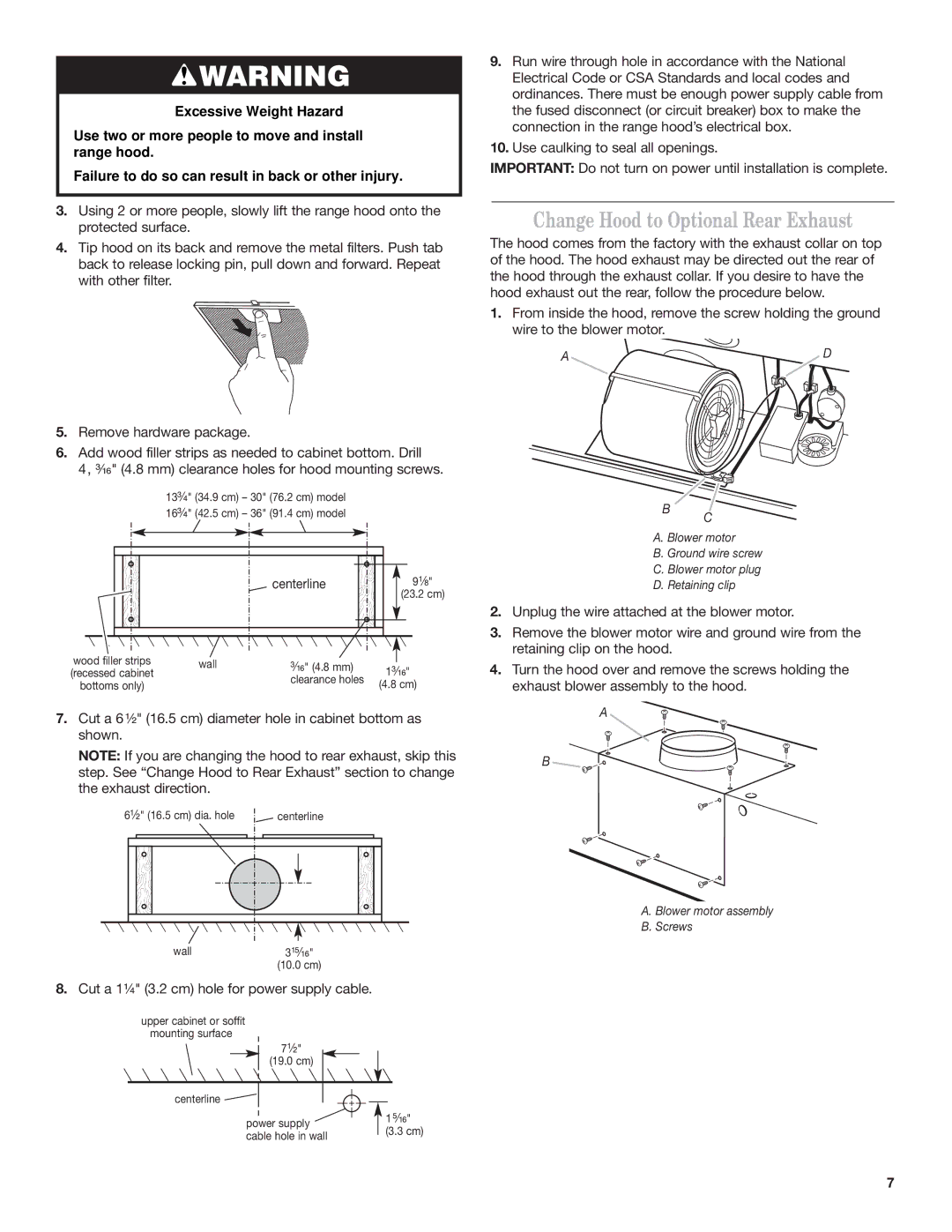Ventilation Hood specifications
The KitchenAid Ventilation Hood is a premium kitchen accessory designed to enhance your cooking experience while ensuring a clean and pleasant environment in your kitchen. This essential appliance combines aesthetics with functionality, making it not only a practical component of your culinary space but also an elegant fixture that complements your kitchen design.One of the standout features of the KitchenAid Ventilation Hood is its powerful ventilation system. With a range of CFM (cubic feet per minute) options, these hoods effectively capture smoke, steam, and cooking odors, ensuring that your kitchen remains fresh during and after meal preparation. The three-speed blower allows you to choose the perfect level of air circulation based on the intensity of your cooking, providing flexibility to match your culinary needs.
In addition to its efficiency, the KitchenAid Ventilation Hood is designed with a sleek and modern aesthetic. The stainless steel finish not only gives it a professional appearance but also ensures durability and easy maintenance. The hood is available in various styles, including wall-mounted, under-cabinet, and island configurations, allowing you to select the perfect model that fits both your kitchen layout and personal taste.
Technological innovations enhance the user experience as well. Many KitchenAid Ventilation Hoods come equipped with LED lighting, which illuminates your cooking surface effectively, enhancing visibility. This energy-efficient lighting is designed to last longer than traditional bulbs, reducing the frequency of replacements while providing bright, even illumination.
Moreover, these hoods often feature dishwasher-safe filters, making cleanup straightforward. The filters are designed specifically to capture grease and other particulates, ensuring optimal performance and longevity of your appliance. Some models also incorporate charcoal filters, which assist in reducing odors even further, perfect for kitchens that frequently prepare aromatic dishes.
Noise levels are another concern with ventilation hoods, but KitchenAid addresses this with its Quiet-Efficient Ventilation Technology. This feature ensures that even at higher speeds, the hood operates more quietly, allowing for an enjoyable cooking environment without overwhelming noise.
In summary, the KitchenAid Ventilation Hood is a perfect blend of style, efficiency, and advanced technology. With its powerful ventilation capabilities, aesthetic appeal, user-friendly features, and quiet operation, it is an ideal addition to any kitchen, promising both functionality and elegance to enhance your culinary endeavors.

